Introduction to Skier’s Thumb
Skier’s thumb is an injury to the soft tissue, or ligament, that connects the bones of your thumb. It is so-called because it often happens to skiers. The outstretched position of the hand around the ski pole causes the ligament to stretch or tear when stress is applied.
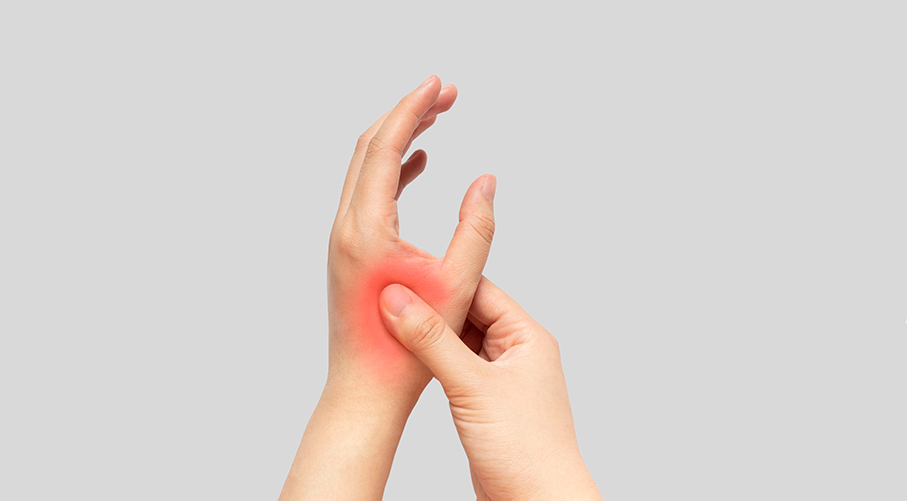
Those who are prone to the condition should understand the symptoms so they can detect it early on before it gets worse. They should know the various treatment options to decide which is right for them. Skier’s thumb can be cured with the proper approach.
What is Skier’s Thumb?
Skier’s Thumb is an injury to the ligament that connects the bones at the base of the thumb, also called the ulnar collateral ligament (UCL). It is located on the inner side of the thumb at the metacarpal phalangeal joint. Its positioning allows it to provide stability to the thumb and support hand strength.
Injuries in this area can be traumatic and may considerably impact hand movement.
Although the injury is commonly called Skier’s Thumb, it may also be referred to as a UCL tear of Gamekeeper’s Thumb. The latter term came about because the injury also commonly occurred in gamekeepers due to the repetitive motion of breaking animals’ necks while hunting. However, that term is not as popular in modern times.
Causes of Skier’s Thumb
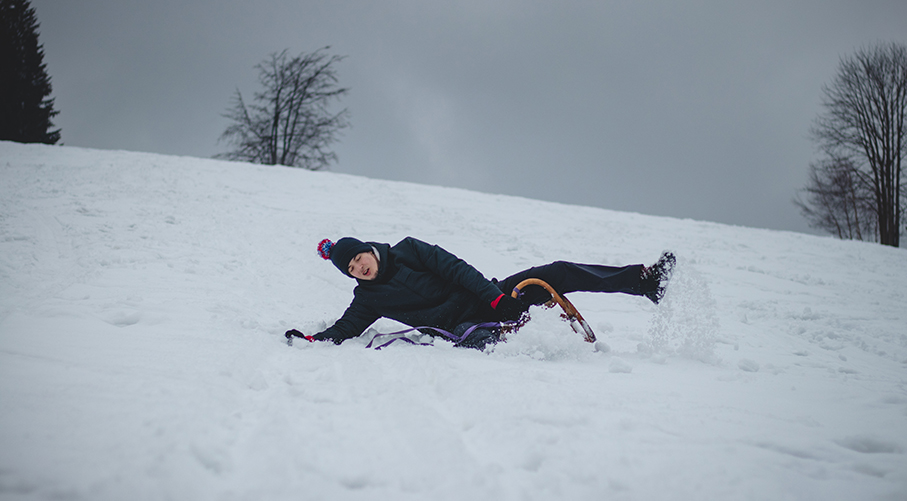
Primary Cause: Injury from a Fall
Skier’s Thumb can occur under various circumstances, but it most commonly happens when a skier falls on the slope. The skier will typically have their hand wrapped around a ski pole. They will use the pole as leverage during the fall.
The motion of using the pole to steady oneself puts stress on the UCL ligament causing it to tear. It can also strain the wrist and tear the ligaments in that area.
Secondary Causes
Although skiing is the primary cause of Skier’s Thumb, other incidents can cause the injury. For example, any sport that involves catching a ball, like rugby, baseball, and handball, can injure the thumb area. With enough momentum, the ball can impact the ligament when caught, causing a tear.
Skier’s Thumb can also occur on the ski slopes when snowboarding. You can fall when holding a snowboard pole or jam your thumb into the snow. Any fall with an outstretched thumb can cause the condition.
The condition can also be a repetitive stress injury (RSI) which occurs in people who do repetitive physical tasks every day. If you grasp objects and make twisting and turning movements as part of your daily tasks, Skier’s Thumb may develop.
Recognizing the Symptoms of Skier’s Thumb
Individuals who are prone to Skier’s Thumb should be aware of the symptoms. If the condition is caught early on, depending on the circumstances, it may be treated quickly. For example, if Skier’s Thumb is developing as an RSI, you may be able to diagnose it and treat it with a few days’ rest.
Here are some symptoms to look out for.
- Pain and Swelling: Pain and swelling are the most common Skier’s Thumb symptoms. You may experience pain and swelling at the ligament and throughout the thumb. These areas will typically swell minutes to hours after the injury occurs.
- Bruising and Weakness: Bruising and weakness may also occur. The skin over the thumb may turn blue or black. You may also have difficulty grasping objects.
- The Sensation of Looseness or Instability in the Thumb Joint: The UCL ligament stabilizes the thumb. You may experience the sensation of looseness or instability when an injury occurs.
- A “Catching” Feeling When Moving the Thumb: You may experience a catching feeling like something is stuck in the thumb ligament. This sensation is typically related to swelling and inflammation, scar tissue formation, tightness in the muscles and tendons, or changes in the way the joint moves.
Diagnosis of Skier’s Thumb
If you suspect you have Skier’s Thumb, you may want to visit a doctor. They will provide an official diagnosis and recommend treatment options. The examination may include the following:

Physical Examination
During a physical exam, the doctor will compare the injured thumb with the uninjured thumb to determine the looseness of the ligament. They will also assess if any damage occurred in the nerves of your hand and other parts of your arm.
Imaging Tests
The doctor may also order X-rays MRIs and an ultrasound as part of your examination. X-rays cannot diagnose torn ligaments, but they can rule out fractures. MRIs and ultrasounds can diagnose torn ligaments and provide insight into the extent of damage so the doctor can make the proper treatment recommendations.
Treatment and Recovery Options
Skier’s Thumb is painful, but it can be treated. Your doctor will recommend the treatment option that’s right for you. Your options include:
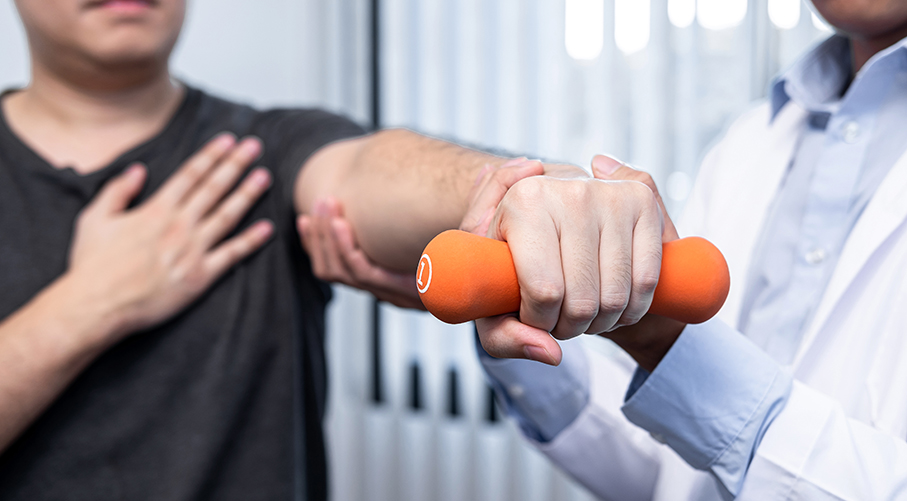
Non-Surgical Treatments
- Splints or Casts for Mild Injuries.: Splints or casts will keep your thumb in place and prevent further injuries.
- Immobilization: The doctor may recommend you keep your thumb immobilized and avoid activities that may lead to re-injury. Rest periods typically last 4-8 weeks depending on the extent of your injury.
- Physical Therapy: Range of motion exercises are often a part of Skier’s Thumb rehabilitation. They help maintain flexibility, prevent stiffness, and promote healing. Work with a professional to ensure your physical therapy does not lead to re-injury.
Surgical Options
- When Surgery is Required: Surgery may be recommended if the ligament is completely torn, or the joint is unstable. The doctor may also recommend surgery if a Stener lesion is present if an avulsion fracture occurs, or if there is an intra-articular fracture.
- Overview of Surgical Techniques: Ligament surgery typically involves making a small incision along the thumb joint to see where the ligament was torn. If possible, the surgeon will use sutures to reattach the ligament to the bone. If that technique is not possible, the surgeon may make a new ligament using a tendon graft from your forearm and attach it to the bone.
- Recovery Process and Time: The recovery process is long. It can take up to six months to fully recover. You may experience pain and swelling. Your doctor will make post-care recommendations such as hand therapy exercises, rest, and limited hand use. Although recovery is long and painful, you will gradually gain mobility and experience reduced pain as you heal.
- Possible complications and expectations post-surgery: You may encounter possible complications such as bleeding, infection, nerve damage, reduced range of motion, arthritis, and temporary changes in sensation around the affected area. If complications occur, talk to a doctor right away.
Prevention Tips for Skier’s Thumb
Skier’s Thumb can be treated, but the best strategy is to prevent it from occurring. Here are some helpful hints that will keep your hand safe.
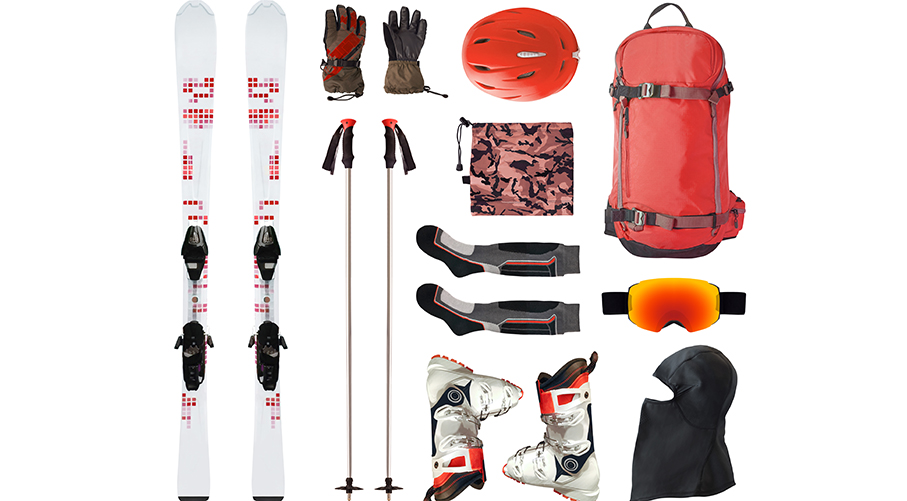
Proper Fall Technique
Skiers should learn to discard their ski poles during falls. They should use an outstretched hand, free of the ski pole, to cushion their fall.
Use of Protective Gear
A thumb brace can protect your thumb while skiing and engaging in other sports. The device wraps around your wrist and thumb to minimize injuries. You should also use poles with finger groove grips that do not feature wrist straps or closures that could restrain your hand during a fall.
Strengthening Exercises for the Thumb
A strong thumb is less prone to a Skier’s Thumb injury. You can strengthen your thumb with the following techniques:
- Range of Motion Exercises: Move your thumb in all directions. Hold the position when it’s at the furthest point from your hand.
- Squeeze a Stress Ball: Squeeze the ball for 5-10 seconds. Do three sets of 10 at various points throughout the day.
- Use a Resistance Band: Place the band around your thumb and fingers. Open your fingers to stretch the band.
- Pick Up Small Objects: Use your thumb and various fingers to pick up small objects like paperclips and marbles from flat surfaces.
Conclusion
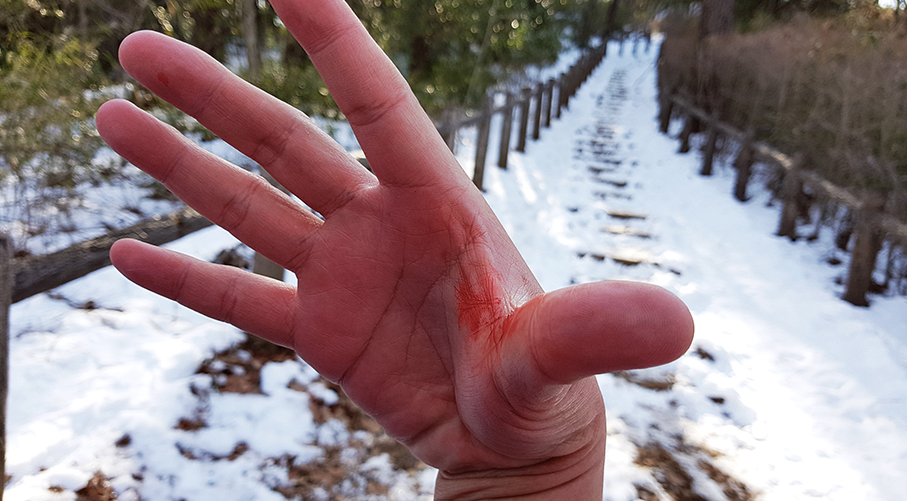
Skier’s Thumb is a tear of the UCL ligament located at the base of the thumb. It is a common skiing injury, but it can also occur when playing other sports and engaging in repetitive movement. Common symptoms include pain, swelling, and discoloration.
The condition can be treated with rest and physical therapy. In some instances, surgery may be necessary. Seek timely medical care for optimal recovery.
People prone to Skier’s Thumb may also practice prevention techniques to reduce the risk of injury. They should understand ‘safe falling’, wear protective gear, and exercise to strengthen their thumb. With the proper care, you will reduce your risk of injury on and off the slopes.